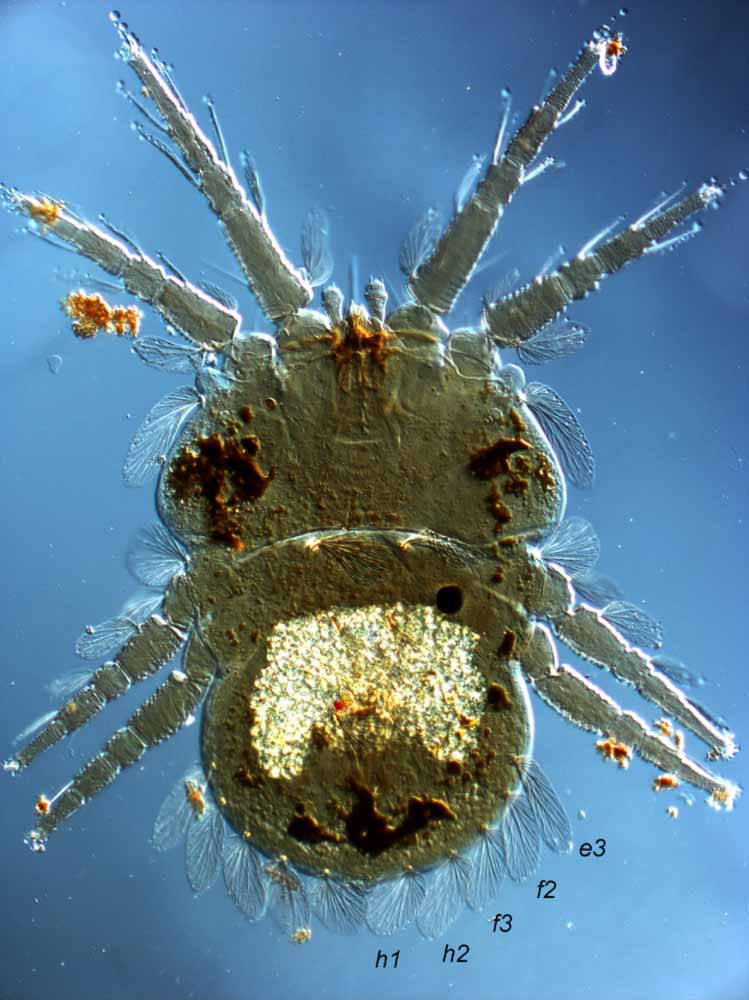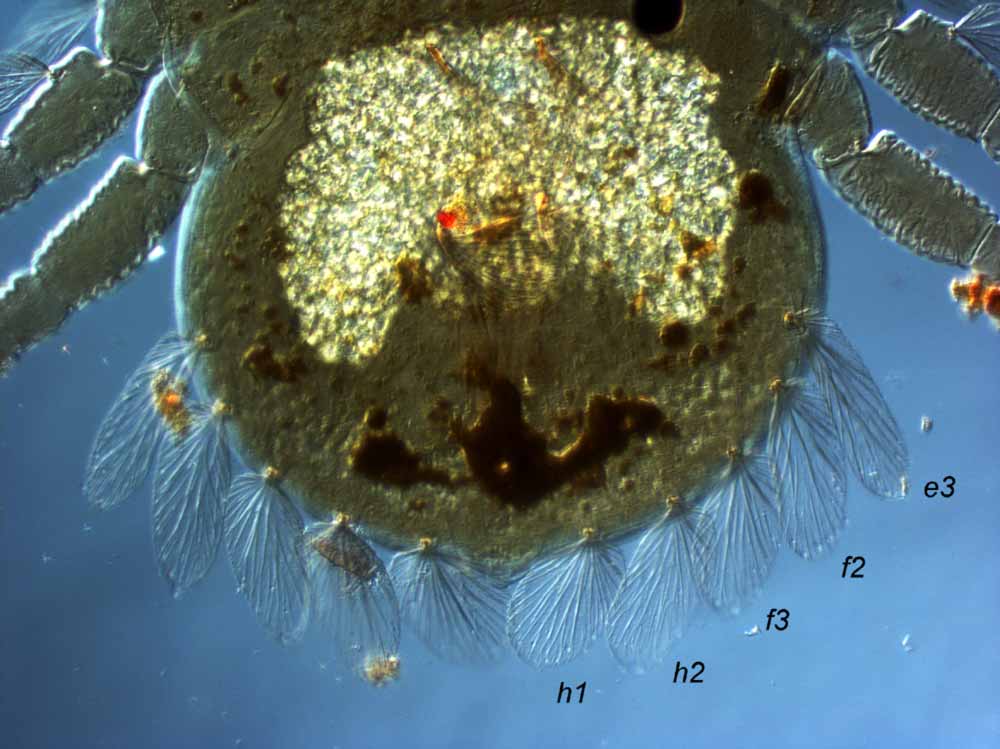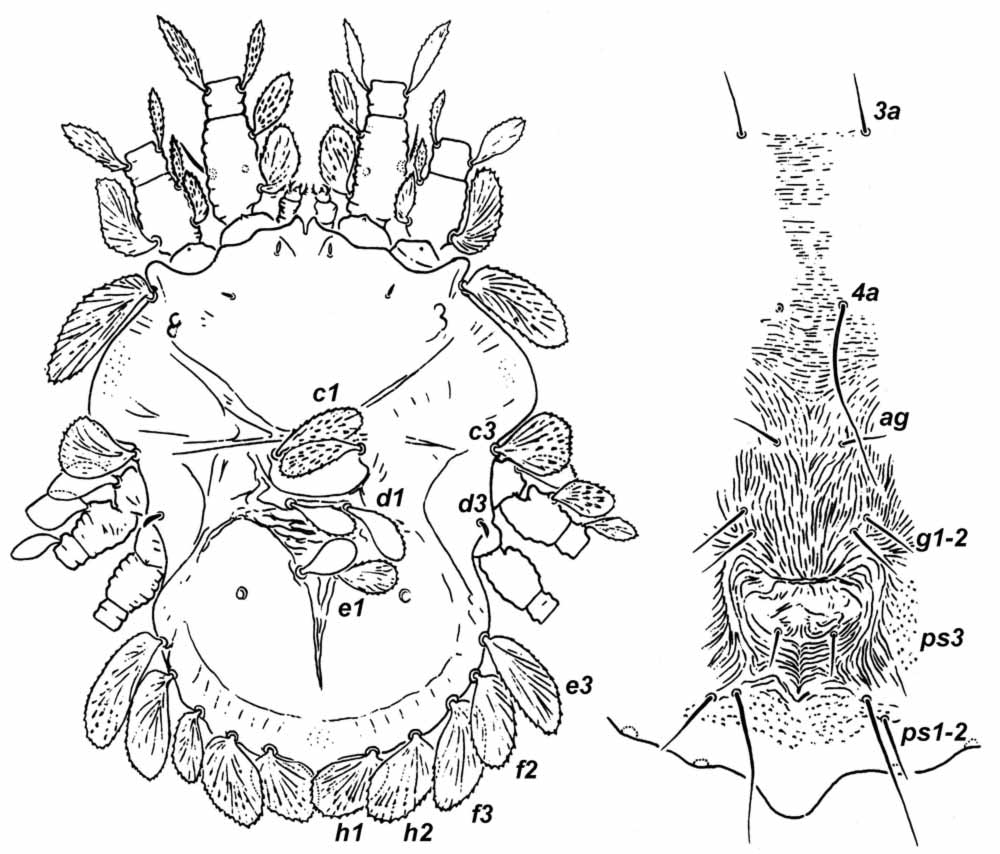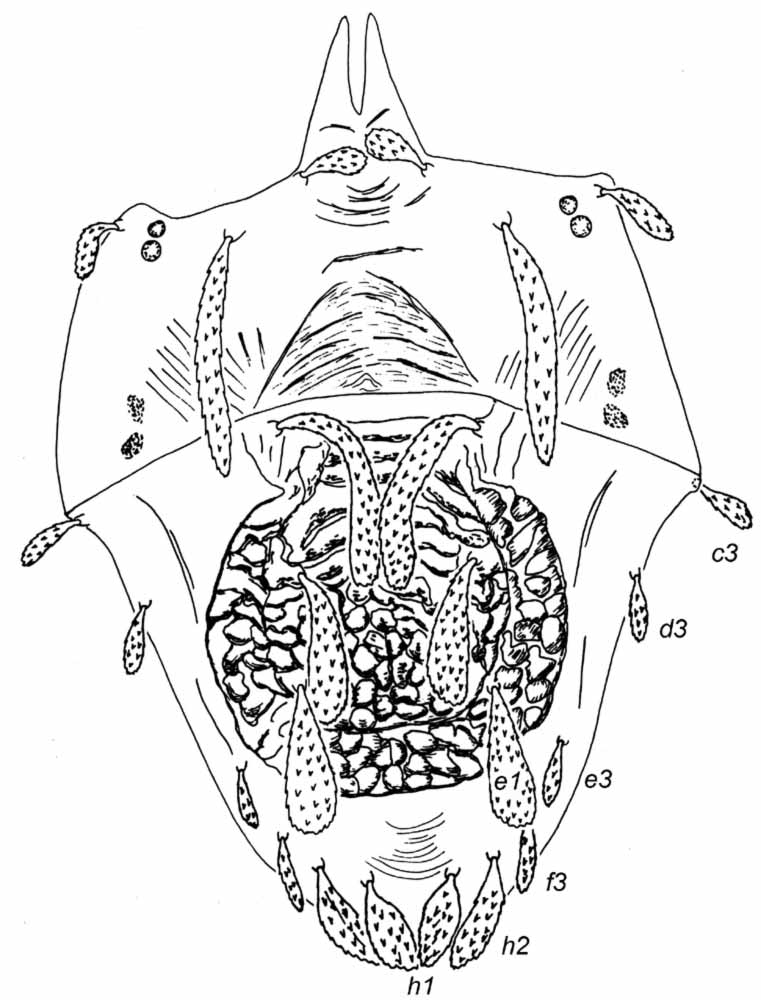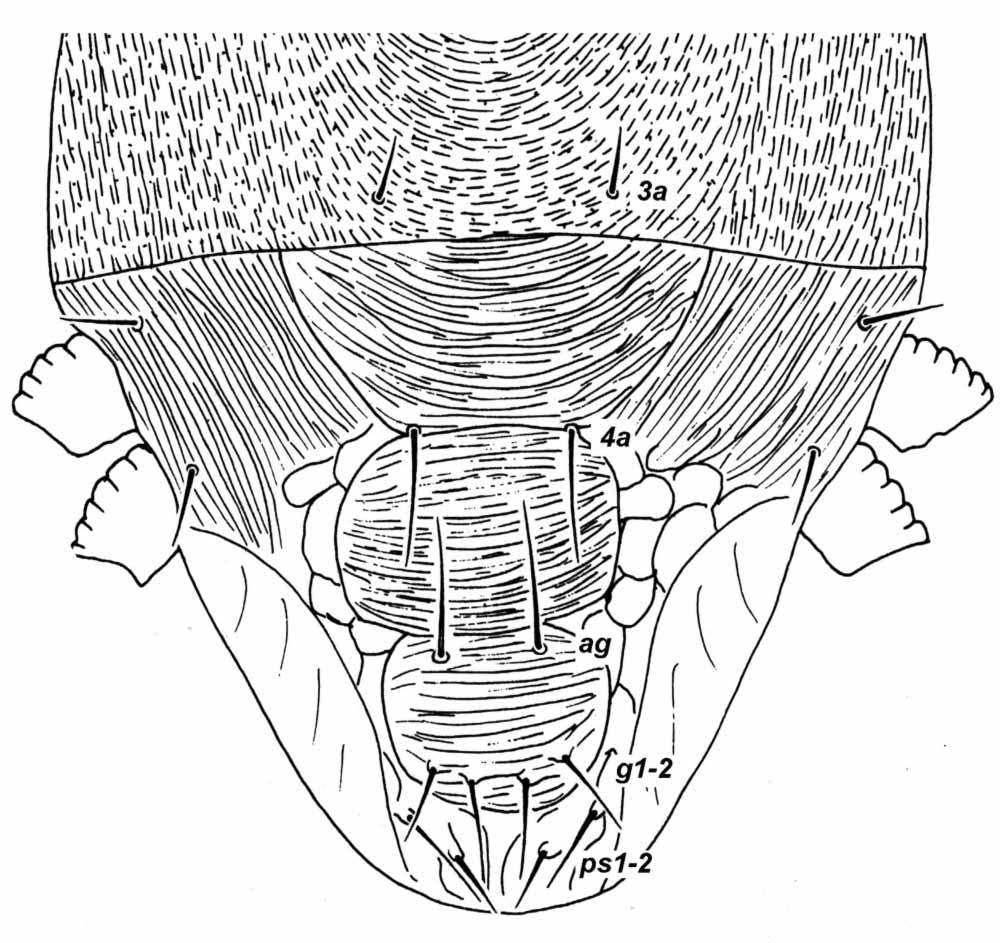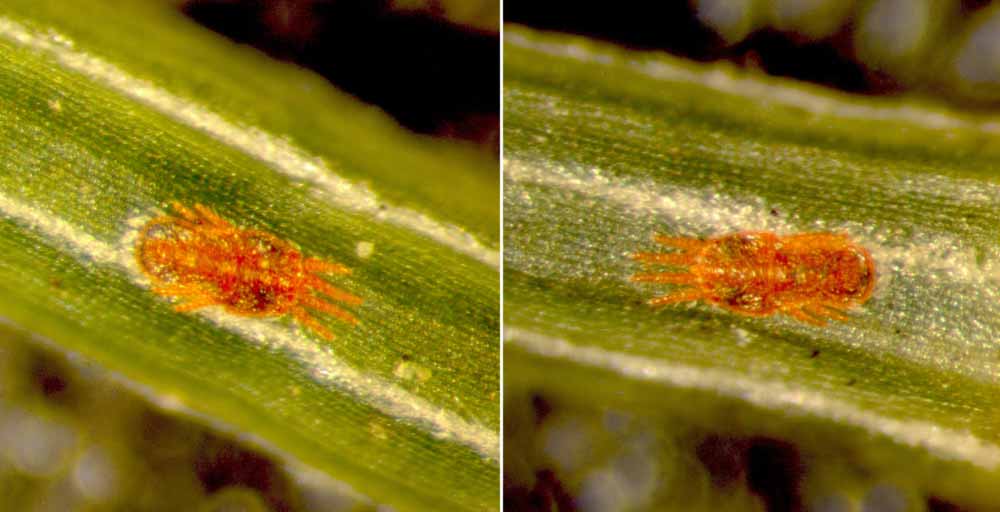Ultratenuipalpus
|
Fig. 1. Ultratenuipalpus sp. adult female dorsum. |
|
Fig. 2. Ultratenuipalpus sp. adult female posterior dorsum. |
|
Fig. 3. Ultratenuipalpus meekeri female, dorsum and venter with detail of genital region (after Baker & Tuttle 1987). |
|
Fig. 4. Ultratenuipalpus quadrisetosus female dorsum (after Meyer 1979). |
|
Fig. 5. Ultratenuipalpus quadrisetosus female venter, with detail of genital region (after Meyer 1979). |
|
Fig. 6. Ultratenuipalpus sp. female live. |
Key characters
- c2, d2, e2 absent (Figs. 3-4)
- f2 present (Figs. 1-3) or absent (Fig. 4); when present inserted on lateral margin (Figs. 1-3)
- h2
not elongate (Figs. 1-4) - anterior margin of prodorsum with forked projection (Fig. 4), often reduced (Fig. 3)
- ventral and genital plates developed or not developed (see Remarks)
- 2 or 3 pairs ps setae (Figs. 3, 5)
- 4 segmented palp
- males with modified, elongate and/or thickened ps1 setae
Similar taxa
Tenuipalpus - has seta h2 elongate
Urigersonis - has setae sc2 and f3 elongate; 3 pairs ps setae
Number of species
over 22
Authority
Mitrofanov
Distribution
Most species are recorded from Chile (3 spp.), Mexico (2 spp.), New Zealand (9 spp.), South Africa (3 spp.).
Hosts
Recorded from ferns and several other families including: Asteliaceae, Rosaceae, Rubiaceae.
Colour
- usually red when alive (Fig. 6)
- eggs red
Remarks
Two distinct groups of species exist within Ultratenuipalpus sensu lato (Mesa et al. 2009).
Ultratenuipalpus sensu stricto (Fig. 3)
- many dorsal setae broadly palmate, leaf-like
- ventral, genital and anal plates not developed
- 3 pairs of ps setae
U. quadrisetosus group (Figs. 4-5)
- dorsal setae thick, barbed
- ventral and genital plates developed, clearly defined
- 2 pairs of ps setae
Many species were originally described as Tenuipalpus (see Mesa et al. 2009).

